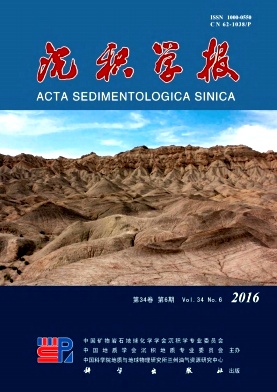The Flow Transforming Deposits of Sedimentary Gravity Flow-Hybrid Event Bed
doi: 10.14027/j.cnki.cjxb.2016.06.009
- Received Date: 2015-12-14
- Rev Recd Date: 2016-02-17
- Publish Date: 2016-12-10
-
Key words:
- hybrid event bed /
- flow transformation /
- turbidity current /
- debris flow /
- rheology
Abstract: With the maturity of theoretical systems of turbidity current and debris flow, gravity flow transformation has gradually drew more attention, and its related concept-hybrid event bed is also aroused at this time. The hybrid event bed is a depositional record of flow transformation from a single-period debris flow or turbidity current event, which is manifested by vertical depositional combination of various rheological characteristics. The sequence of a typical hybrid event bed contains five divisions:clean sand internal H1, banded internal H2, cohesive debrites internal H3, ripple-laminated internal H4 and massive mud internal H5, and obvious lithological interfacies are well identified in this bed. Hybrid event beds are well distributed in the coarse-grained deltas, the distal and lateral area of submarine fans and lobes, the transitional zone of channel-lobe and confined mini-basin margin with the vertical stacking thickness up to several meters. The recognition of hybrid event bed is extremely meaningful for further study on flow transformation of gravity flow and spatial rheological characteristics. Also, it promotes corresponding studies on the heterogeneity of hydrocarbon-bearing reservoirs and provides new thoughts for favorable deep-water reservoir sandbodies. The geophysics identification of hybrid bed and the flexible application of this new concept to the study on lacustrine gravity flow will be the next research direction.
| Citation: | Bouma, ZHU XiaoMin, GENG MingYang, LIU ChangNi. The Flow Transforming Deposits of Sedimentary Gravity Flow-Hybrid Event Bed[J]. Acta Sedimentologica Sinica, 2016, 34(6): 1108-1119. doi: 10.14027/j.cnki.cjxb.2016.06.009 |






 DownLoad:
DownLoad: